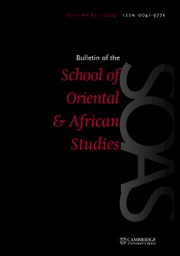This is a solidly useful introduction to one of the most attractive yet elusive sources produced by the cultural traditions of East Asia, at once recognizable as the outcome of many years of teaching and research. Of its three parts, Part 1 deals with the text of the Daode jing, covering “Times and authorship” (pp. 7–25), “Textual development” (pp. 26–44), “Key concepts” (pp. 45–66), and “Social application” (pp. 67–90). Here, after an overview of the general environment that produced the work, concise accounts are given of the startling early manuscript discoveries of the late twentieth century and their implications, followed by a review of the contents and how they seem to have initially been put into practice. The treatment is inclusive, not attempting to argue for any specific reading of the work but providing a starting point for further reading as required, with separate bibliographies here and throughout the guide attached to each section.
Part 2 deals with the text as it existed in later tradition in China, starting, however, with the pre-imperial context. This is a vast topic, and not one in which a comprehensive treatment is easily achieved. The headings chosen are “Community and politics” (pp. 93–113), “Devotional activation” (pp. 114–33), “Commentary exegeses” (pp. 134–54), and “Later developments” (pp. 155–75), which last category includes new texts inspired by the Daode jing and a section on Interior Alchemy. Part 3 covers the modern reception of the work, starting with “China today” (pp. 179–200), followed by “In the world” (pp. 201–21) which includes Korea, Japan, and Vietnam, “English translations” (pp. 222–42), and “Western adaptations” (pp. 243–62), wherein we meet such well-known works as The Tao of Pooh and the like; a ten-page index follows.
The range thus covered by this guide is deeply impressive, and it seems rather beside the point to suggest that more could have been included. But I was mildly surprised to find in the commentary section no mention of Lin Xiyi 林希逸 (1193–1271), since his colloquial reading was important for both Korea and Japan in the seventeenth century, if not for some more recent translations; perhaps for the sake of clarity such information was excluded so as not to anticipate the “In the world” section in the third part. As a matter of pedagogical benefit, I might in addition have included a final bibliography for studying the Daodejing covering such useful works as the 2017 Chicago Divinity School doctoral dissertation by Lucas Carmichael on the “Daode Jing as American scripture”, the bibliography of translations by Misha Tadd (which I have yet to see), and Jonathan Star, Tao Te Ching: The Definitive Edition (New York, NY: Jeremy P. Tarcher/Putnam, 2001), which includes the full Chinese text and Romanized transcription together with a simple form of concordance that can be used without much knowledge of the Chinese language – though Sinologists will doubtless prefer the Konkordanz zum Lao-tzu produced in Munich in 1968.
But actual misstatements seem relatively rare. On p. 40 we are cautiously introduced to Yan Zun 嚴遵, “supposedly the author of a commentary” which is “subject to doubts in terms of dating”, but on p. 115 that cautious approach is abandoned in favour of a straightforward statement that Yan “wrote a commentary”. On p. 206 we meet “the first translation of the Daode jing into a Western language: the Latin rendition by François Noël (1651–1729), which was published in the early 1700s. It allowed certain thinkers such as Voltaire (1694–1778), Jean-Jacques Rousseau (1712–1778), and Gottfried Wilhelm Leibniz (1646–1716) to take its thought into account”. But this translation, though mentioned in some early references, has long been lost, and may never have been published, making its influence somewhat speculative; the earliest surviving translation into Latin, which again until recently existed only in manuscript copies, was apparently undertaken by Jean-François Noëlas (1669–1740), and has been studied by Claudia von Collani and others. Lastly, the lack of Chinese characters in this guide, unlike its predecessor on the Yi Jing, seems a little unfair on students with a command of an East Asian language: they may be recommended to go to an alternative source not in English, but in fact there is much here that would be quite hard to find immediately elsewhere.



